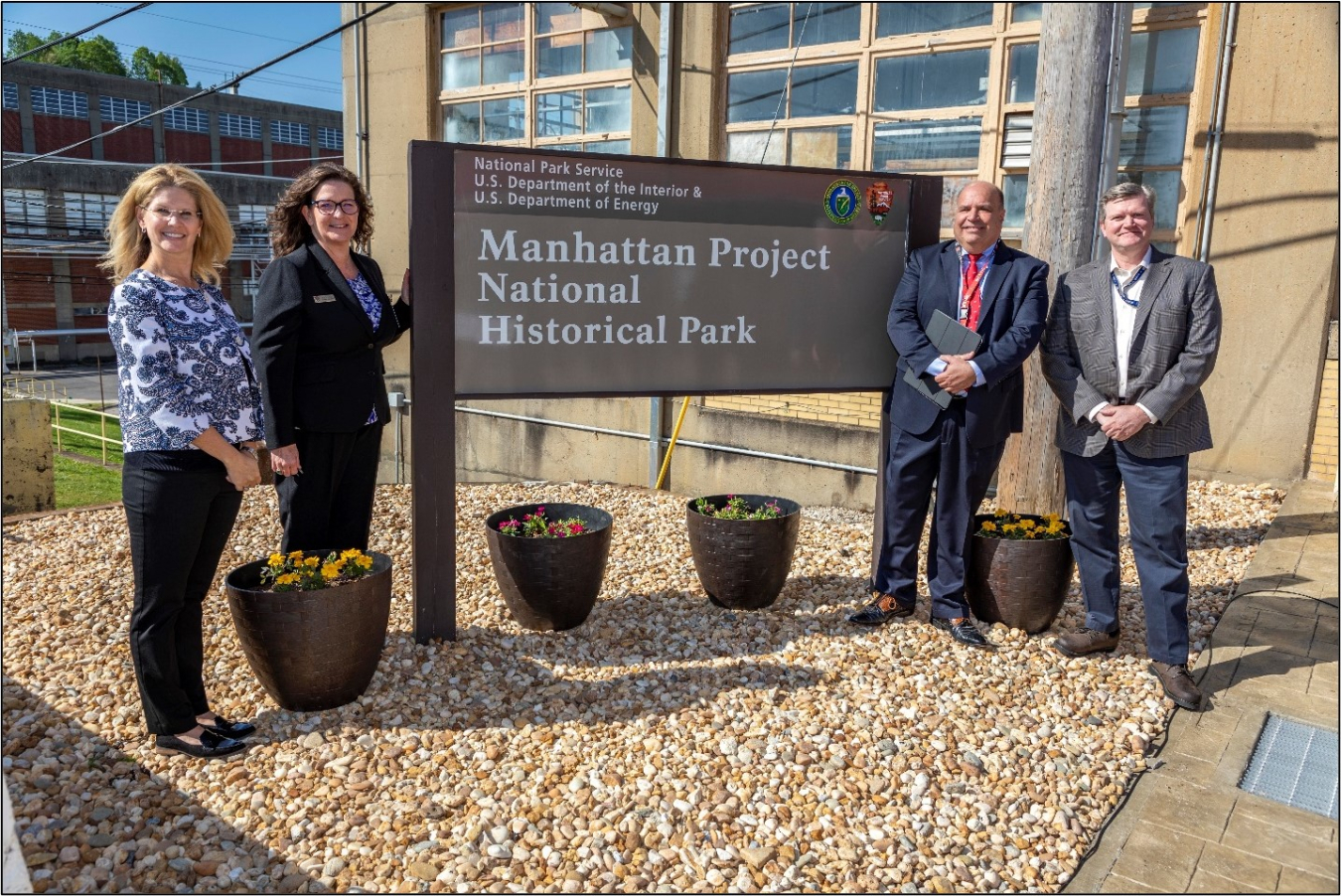Project honors workers, historic efforts, LM’s O’Konski says.
May 6, 2022
Inside the Y-12 National Security Complex in Oak Ridge, Tennessee, sits a nondescript building; light brown, made of brick, and looking very much the part of a 1940s-era facility.
But this ordinary-looking building is no such thing. That’s because what happened inside it was not only extraordinary, but helped to shape the course of world history.
On Wednesday, April 27, U.S. Department of Energy (DOE) Office of Legacy Management (LM) Deputy Director Peter O’Konski joined representatives of the National Park Service and other DOE offices to recognize the significance of Building 9731, one of the Manhattan Project’s earliest landmarks.
Building 9731 became the first Manhattan Project facility to have a sign recognizing it as a permanent historical element of the Manhattan Project National Historical Park, a joint effort between DOE and the National Park Service. The project celebrates the people and places associated with the U.S.’s efforts in Oak Ridge, Tennessee; Hanford, Washington; and Los Alamos, New Mexico, who ushered in the nuclear age and conclusion of World War II.
Building 9731, known as the Y-12 Pilot Plant, houses the prototype equipment for the electromagnetic devices known as Calutrons, industrial-sized mass spectrometers invented by University of California scientist Ernest Lawrence. The first building completed at Y-12 and the first to operate, Building 9731 was the pilot building where operations workers and cubicle operators trained to perform the critical uranium separation process.
“(This) unveiling demonstrates how the Department of Energy and the National Park Service continue to work together to fulfill the mission of the Manhattan Project National Historical Park,” said O’Konski, one of the speakers to a crowd of about 40 visitors who participated in the ceremony outside the building. “This Seal of the National Park Service is powerful symbolism. It shows we are committed to telling the story of what was done here and honor the people who helped win World War II and the Cold War. It is a testament to the Greatest Generation.”
Besides O’Konski, there were three other speakers – Consolidated Nuclear Security Chief Operating Officer Bill Tindal; Manhattan Project National Historical Park Superintendent Kris Kirby; and DOE Program Manager Mary Helen Hitson.
“This will bring the Pilot Plant full circle, once again serving as a training hub while telling the story of those who came before us,” Tindall said.
Hitson said the important work that occurred inside Building 9731 justifies its place within the Manhattan Project National Historical Park.
“Building 9731 was one of the first buildings constructed as part of the Manhattan Project,” Hitson said. “So it makes sense that this is the first building to have a sign.”
Kirby said the workers at Oak Ridge are to be commended for the important work they performed.
“The pride and connection to these facilities show,” Kirby said. “I always like to recognize the workers, a bunch of ordinary people who got up to go to work and got things done.”
For more information on the Manhattan Project National Historical Park, visit https://www.nps.gov/mapr/index.htm.

